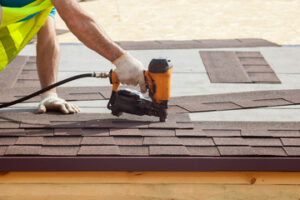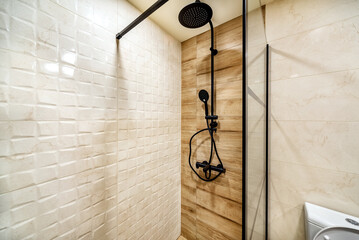A metal roof can significantly affect your home’s energy efficiency. A cool metal roof can help diminish interior cooling costs and even reduce the urban heat island effect on your community.
Metal roofing is available in a variety of colors and finishes. It can mimic the look of shingles, clay tile, slate, or wood shake. Contact Metal Roofing Winston Salem now!
Unlike traditional asphalt shingles, which can crack, burn or curl when exposed to harsh weather conditions, metal roofs are highly durable. They can be expected to last a minimum of 40 years, and specific types, such as copper or galvanized steel roofs, can dazzle for decades longer. Combined with their energy efficiency, these roofing options offer long-term value that can offset initial installation costs, as well as reduce the need for periodic replacements.
When properly maintained, metal roofs are highly resistant to corrosion and damage from ice, snow, and hail. They also prevent leaks, mildew, and rot that are common with other roofing types. Additionally, metal roofs are fire-resistant, adding another layer of safety to commercial and industrial buildings. In addition, many metal roofs have a Class A fire rating, which could reduce insurance premiums for property owners.
The durability of metal roofing also adds resale value to homes. Potential buyers are often willing to pay a premium for a house with a strong, reliable roof. Furthermore, metal roofs are a great choice for areas prone to severe weather conditions. Their incredible wind resistance can withstand gusts of up to 140 miles per hour, and they don’t crack or corrode like shingle roofs during intense storms.
One drawback of metal roofs is that they can be noisy during heavy rainfall or hailstorms. However, installing additional insulation or underlayment can dampen the sound. Additionally, choosing thicker gauge panels and opting for textured coatings can significantly reduce noise levels.
Energy Efficiency
Energy efficiency is more than just a trend in home design, it’s a way of life for many homeowners who want to lower their utility bills and environmental footprint. One of the best ways to achieve this is with a metal roof.
With their reflective surface, interlock metal roofs bounce back most of the sun’s heat, decreasing a building’s cooling needs. As a result, air conditioning systems don’t have to work as hard to maintain comfortable temperatures, resulting in significant savings in energy costs over time. This is especially true for homes in warmer climates, as metal roofs can reduce air conditioning usage by up to 40 percent during hot summer weather.
Metal roofs also offer a high level of insulation, keeping internal temperatures more stable throughout the year. This helps to further decrease heating and cooling expenses, and can help save money on both electricity and gas bills. Additionally, metal roofs can be fitted with a variety of solar panels to further offset a home’s energy consumption and increase energy efficiency.
In addition to their energy efficiency, metal roofs are a fire-resistant roofing option that can protect buildings against fire damage and maintain structural integrity in the event of a fire. This combination of safety and security is a big selling point for many homeowners who want to minimize their risk of an emergency situation, while also reducing energy consumption and increasing their property value.
Not only do metal roofs reflect sunlight, they also emit less heat than shingle roofs. As a result, they are among the most energy efficient roofing options available. This is particularly true for light-colored metal roofs, as well as those in cool colors like blues and greens.
By reflecting most of the sun’s heat rays, and emitting very little heat in return, metal roofs can significantly reduce a building’s cooling costs during hot summer months. As a result, they can provide homeowners with substantial energy savings over the long-term, and a reduction in their dependence on fossil fuels. For this reason, it’s important to consider the energy efficiency of a metal roof when choosing the right color for your home.
Aesthetics
Homeowners are embracing the allure of metal roofing, which pairs unparalleled durability with a spectrum of color and style options. This transformative roofing system brings a modern aesthetic to any structure, reflecting the unique architectural design of each home and exuding timeless beauty.
As with any exterior remodeling project, the color of a metal roof is a critical factor in its aesthetic impact. A broad selection of colors, ranging from classic hues to vibrant tones, offers a seamless integration with any existing color scheme. Aside from enhancing the visual appeal of the property, metal roof colors also play an important role in energy efficiency. Lighter shades, which reflect sunlight rather than absorbing it, can significantly reduce cooling costs in warmer climates.
In addition to their stunning color palette, homeowners can also customize the look of their metal roofs by selecting different shapes and styles. Standing seam roofs, for example, create a sleek and uninterrupted appearance that complements contemporary homes. Corrugated metal roofs offer a more textured appearance, which is ideal for homes with rustic or cottage designs. Metal shingles and shakes can also provide the classic charm of traditional shingle or wood shake roofs, but with the added benefit of durability.
Aside from coordinating with the architectural design of a building, it’s important to consider the climate and local energy efficiency standards when selecting a metal roof color. Darker colors may be a better fit in colder regions, where they can help to retain heat and lower energy bills. Additionally, homeowners should consider any neighborhood or homeowners association regulations when choosing a color for their metal roof.
Besides blending seamlessly with the exterior of a building, it’s important for a metal roof to complement the surrounding landscape. For this reason, many homeowners opt for skylights, which allow natural light to stream into the living space, reducing the need for artificial lighting.
Aside from their unsurpassed durability and energy efficiency, metal roofs are a beautiful addition to any home or office. They combine the timeless allure of a classically-inspired roof with modern aesthetics and a variety of customizable options, providing the perfect fit for every architectural style.
Recyclability
When metal roofing reaches the end of its life, it can be recycled into new roof panels and other metal products. This reduces the demand for virgin materials and helps to protect the environment.
When you are considering which type of roofing to install, look for metal that contains a high percentage of recycled materials. This is important because it can save you money in the long run. Many metal roofs contain a minimum of 25% recycled material, and some are made with as much as 95% recycled content.
In addition, metal is an extremely durable material that can be recycled time and again without losing its quality or strength. This can reduce the need for a new roof, helping to keep landfills free of unnecessary waste.
Unlike shingle roofs, which can take 300-400 years to decompose in a landfill, metal roofing is fully recyclable. When the roofing is removed from a home or business, it can be sent to a recycling plant to be melted and reused in future metal roofing. The common metals used in roofing are zinc, galvanized steel, aluminum and copper. These are all highly recyclable, and it only takes 26% of the energy to recycle steel compared to creating it from raw materials.
Metal roofing also reflects heat from the sun, which can help to lower cooling costs in hot climates. This is a huge environmental benefit, and it can save homeowners substantial amounts of money on their power bills in the long run.
In fact, it is so environmentally friendly that some communities have laws in place requiring that recyclable materials are not placed in landfills. It is always a good idea to check with your local and state recycling regulators to make sure that you are complying with these regulations.
If you are considering installing a metal roof, talk to your roofing contractor about the materials that they use and what options are available for recyclability. They should be able to provide you with the details of the different types of metal roofs and give you an estimate for the cost of the materials.
![Metal Roofing Installation: Step-By-Step Guide [2025]](https://cdn.prod.website-files.com/63a02e61e7ffb565c30bcfc7/6476e0917bdc09608d9b46a6_Metal%20Roofing%20Installation.svg)














